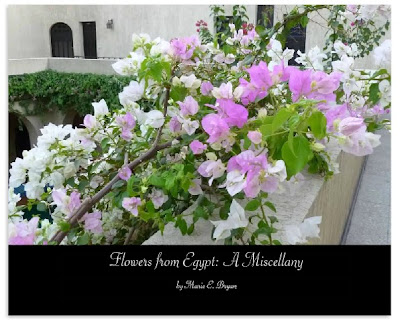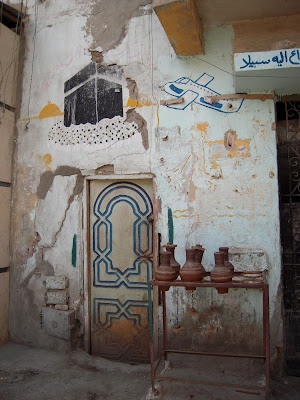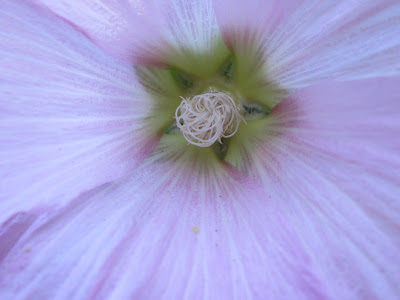Sunday, March 31, 2013
Thursday, March 28, 2013
Flowers from Egypt: A Miscellany
Since I've been having no end of trouble getting the post direct from Shutterfly to Blogger to work and I also can't get a PDF of the book saved to my computer (Thanks a lot, Shutterfly! NOT!) here's my work-around--a screen shot of the cover and a link to the book at Shutterfly.
"Flowers from Egypt: A Miscellany"
"Flowers from Egypt: A Miscellany"
Labels:
Al Moudira,
bougainvillea,
CH,
Egypt,
flowers,
hollyhocks,
Luxor
Friday, March 22, 2013
More on the Damage to Antinoupolis
Just received this update from Jay Heidel:
Dear Friends and Contributors,
Many of you may have heard recently about the damage and looting at Antinoupolis. I wanted to be in touch immediately to let you know that the director of our mission, Dr Rosario Pintaudi, has recently met with the head of the Ministry of State for Antiquities in Egypt, Dr Mohammed Ibrahim, and we are working closely with our Egyptian colleagues to stop the looting, to increase the number of gaffirs (guardians) at the site, to add armed guards at the site from the Ministry of Interior, and to build guard houses around Antinoupolis to house these men.
Dear Friends and Contributors,
Many of you may have heard recently about the damage and looting at Antinoupolis. I wanted to be in touch immediately to let you know that the director of our mission, Dr Rosario Pintaudi, has recently met with the head of the Ministry of State for Antiquities in Egypt, Dr Mohammed Ibrahim, and we are working closely with our Egyptian colleagues to stop the looting, to increase the number of gaffirs (guardians) at the site, to add armed guards at the site from the Ministry of Interior, and to build guard houses around Antinoupolis to house these men.
It is our hope that very soon the damage and looting will lessen and that Antinoupolis will be better protected from those who try to harm it. I also wanted to let you know that this information is making its way into the press.
There is an Italian reporter, Cinzia Dal Maso, who concentrates on archaeological and cultural heritage topics who has an article on the looting at Antinoupolis which will appear in the newspaper “Il sole 24 ore” on 31 March. In the meantime she has posted in her blog about it:
There has also been a piece in English in the online version of the Egyptian newspaper ‘Al Masry al Youm’ called the ‘Egyptian Independent:’
http://www.egyptindependent.com/news/antinoupolis-archaeological-site-being-destroyed-systematically
But more importantly for influencing action here in Egypt, an article appeared in the print version of ‘Al Masry al Youm’ in Arabic on 18 March. A scan of the article with the pictures is attached to this email, and an English translation appears below. The thread of the story is beginning to be picked up by various media outlets and bloggers around the web. If you have contacts in the media, please help us get the word out. Though we have promises of gaffirs, guards, and protection from the Egyptian government, the only way to insure that Antinoupolis actually receives the protection it needs is to increase the profile of the problem in the media and keep the attention of the community and of our Egyptian colleagues on the problem.
Please know that Dr Pintaudi and all of us who work at the site as part of the archaeological mission from the Istituto Papirologico “G. Vitelli” of the University of Florence, Italy are doing all we can to stem the looting and vandalism as quickly as possible.
You have received this email because you are on the mailing list for the “Oracle,” the newsletter of the Antinoupolis Foundation. Please excuse the use of your email address for a purpose other than issuing the newsletter. And we’d like to mention that the third issue of the “Oracle” is in production now and should be in your inbox soon.
Thank you so much,
James B. Heidel, President
The Antinoupolis Foundation, Inc.
Al Masry al Youm article from 18 March 2013
Headline:
“Al Masry al Youm discovers the looting of the ancient city in al Minya governorate in broad daylight. Gangs digging for antiquities in el Sheikh Abada and only one guard in charge of the security.”
Photo captions:
Top left: “The buildings extend to the columns of the ancient city.”
Lower left: “Planting the land to cover the looting of the antiquities.”
Lower right: “Building the new cemeteries as a new way to hide the digging works.”
Article text: [With additional comments and corrections in brackets.]
“Once you enter el Sheikh Abada to the south of Mellawi in Minya province - which holds remains of three ancient civilizations, the pharaonic, Roman, and Islamic civilizations - the evidence of destroyed ancient monuments is all around you. [Islamic pottery or “remains of Islamic civilization” is mentioned throughout the article as predominating on the site; however, there is a paucity of Islamic period material around the site compared to the vast quantity of Christian material which is hardly mentioned in the article at all.] And holes dug by the armies of gangs of the village are everywhere. Or you may see scattered bits indicating they maybe hit a coffin of linen, or Roman coins, or small statues, or small scarabs.
“Antinoupolis or el Sheikh Abada village is on the east bank of the Nile south of Mellawi in Minya province. The name comes from the name of one of the follows of Mohammed, Abada Ibn el Samet, under whose guidance the people of this area came to Islam.
“The great follower entered the ancient city and he passed between the Roman buildings and buried antiquities and monasteries which were built in 130 CE over an area of 7 square kilometers over an ancient pharaonic city about which its walls stand as a witness until today. [Other than the Ramses II temple, there is no evidence of the presence of a pharaonic-period city.]
“The first thing that meets you when you enter the old city is the well of el Sahahba, as the Moslems call it, or the well of Ali el Sahaba as the Christians call it. And the history of this well goes back to the Holy Family, not only did Mary pass by this well, but also Mary the Copt [one of the wives of Mohammed] passed by this well, too. She was one of the people who lived in this city and also Syrene, the wife of the follower named Hassan Ibn Sabet also lived here. Mary the Copt and Syrene were sent to Mohammed as a gift. Instead of the building of Mary the Copt, they built the mosque of Abada. And in the city there is a house of Theodora, one of the Coptic monuments which is not being looted by the gangs.
“Once you turn from the well you find yourself in front of the first of the looting areas where there is the hippodrome - or the horse racetrack - which is about the same size as the Circus Maximus, the famous hippodrome in Rome. The racetrack takes the shape of a horseshoe, but the digging works have destroyed most of its remaining fabric so that you can no longer make out its shape. The digging works around all the city are not the only destruction, but the new cemeteries of 70 villages around are located here. The new cemeteries are here because the people of the other villages failed to extend their own cemeteries, but put their new cemeteries here which are obliged to be built over the antiquities. The people in charge of the MSA in Mellawi have said this to us, but they asked us not to use their names. They said that when you build a new cemetery you cannot move the graves to another place, especially in a village of Upper Egypt.
“The deep digging is all around and the rest of the ancient pottery which dates back to the Roman and Islamic era are spread over the entire site. You can see armed people digging, and they disappear suddenly when they see strangers around. And there is only one guard with an old gun. The number of the guards were thirty-one, and now there is only one waiting for his retirement next September. Without providing a new trained guard.
“On the top of the Deir el Hawa site [a monastery at the north end of Antinoupolis] al Masry al Youm saw some people digging in broad daylight, and once they saw us come, they disappeared as if the mountain swallowed them. And they left a deep hole after some of the archaeologists found pharaonic gold and colored glass and some papyrus and ancient coins which give them the hope to find something valuable. [No gold, pharaonic or otherwise, has ever been found by archaeologists at Deir el Hawa.] The guard shot his gun in the air trying to make them run away until the police can come and see. Once they leave, the people come back again and continue digging.
“In the site of Deir el Hawa and Deir el Sombat [another monastery farther to the north] some of the monks’ rooms can be seen, but the digging works under the walls of these rooms make them collapse. And after the failure of the illegal digging which causes the collapse of the monuments, the second stage comes which is the plowing over and planting of alfalfa or clover for the feeding of livestock after getting rid of all the pottery, by burning it with the rubbish of the city. Beside the garbage dump there is a temple of Ramses II which is preserved with its columns, only a few of them were destroyed without anyone trying to restore it again. Behind the Ramses II temple a person has built his house which is against the law which says no one may build within three kilometers of a pharaonic temple.
“Around the temple of Ramses II the women of the village take the dung of the cows and water buffalo to dry to make fuel for fires to use in baking. And after all these violations, Nagua Mohammed Ali, the manager of ancient sites in Mellawi, she cares only for not giving us any information, and she ordered her employees not to give us any information or to help us in any way. She asked the photographer of Al Masry al Youm to destroy the pictures he had taken of the damage of the site.
“An Egyptologist who completed her PhD at Berlin University, Monica Hanna considered what happened in Mellawi, “a complete crime for Egyptian history.” She has been supplied with notes of the damage by the Italian Mission, the Istituto Papirologico [“G. Vitelli” of the University of Florence], which works at the site. The reports of the Mission contain information regarding the great violations of the people digging or building or planting around the site.
“Hanna adds, “What happened in el Sheikh Abada is a tragedy by all means because people there have no source of income and most of them work in digging for antiquities. And the land allocated for building is very limited, and it stands as a barrier for normal increase of building for the people of the village. Without the interference of the state to provide an alternative, they were obliged to go to the ancient city which has no guard for their expansions. We ask for increasing the guards and arming them with guns so they can stand against armed thieves of the village.”
Monday, March 18, 2013
Sunday, March 17, 2013
Al-Hussein Moulid
Egyptians--a resilient people! Despite all their troubles they can still sing, dance and celebrate (the birth of the grandson of the Prophet).
Saturday, March 16, 2013
More Hollyhocks and Beau at Play
The hollyhocks (all pink) are going gangbusters here at CH. Here are some of my latest photos:
The previous photos were taken during an early morning constitutional in the company of Beau, the Wonder Cat. It's hard to catch him when he's staying still!
The previous photos were taken during an early morning constitutional in the company of Beau, the Wonder Cat. It's hard to catch him when he's staying still!
 |
| I forgive the little dickens a lot because he's so darned cute! |
Labels:
Beau,
cat,
CH,
Egypt,
flora,
flowers,
hollyhocks,
Luxor,
rose trémière
Tuesday, March 12, 2013
Saturday, March 09, 2013
Not Egypt: Cats can be jerks...
Had to share this! It's not Egypt-related, but the behaviors have been known to be practiced by CH cats!
Wednesday, March 06, 2013
The City of the Dead
I found an interesting piece on the City of the Dead in Cairo just this week: The City of the Dead - Part One. It reminded me of my visit to the Northern Cemetery in April of 2010, so I went back through my photos. I have always been intrigued by this seeming contradiction in terms, because the City of the Dead is also very much a city of the living--some people are caretakers of the tombs; others are forced to live there for a variety of reasons. There are thriving communities and interesting juxtapositions, as you can see from some of these photos.
 |
| View south to the Mokattam Hills |
 |
| Masjid al-Sultan Qaytbay |
 |
| Goats in the graveyard |
Tuesday, March 05, 2013
Sunday, March 03, 2013
La Belle Rose Trémière
Labels:
Egypt,
flora,
flowers,
hollyhocks,
Luxor,
rose trémière
Hieroglyphs at Nefersekheru
Labels:
ancient,
Egypt,
hieroglyphs,
Luxor,
Nefersekheru,
tomb
Friday, March 01, 2013
Antiquities Ministry: No scheme to rent monuments to Gulf countries
Oh, well! It was fun while it lasted and generated some pretty good cartoons:
http://www.egyptindependent.com/news/antiquities-ministry-no-scheme-rent-monuments-gulf-countries
http://www.egyptindependent.com/news/antiquities-ministry-no-scheme-rent-monuments-gulf-countries
Subscribe to:
Comments (Atom)








































